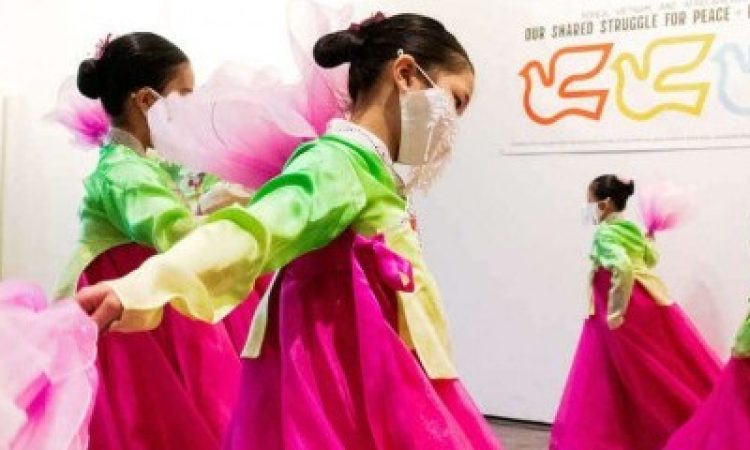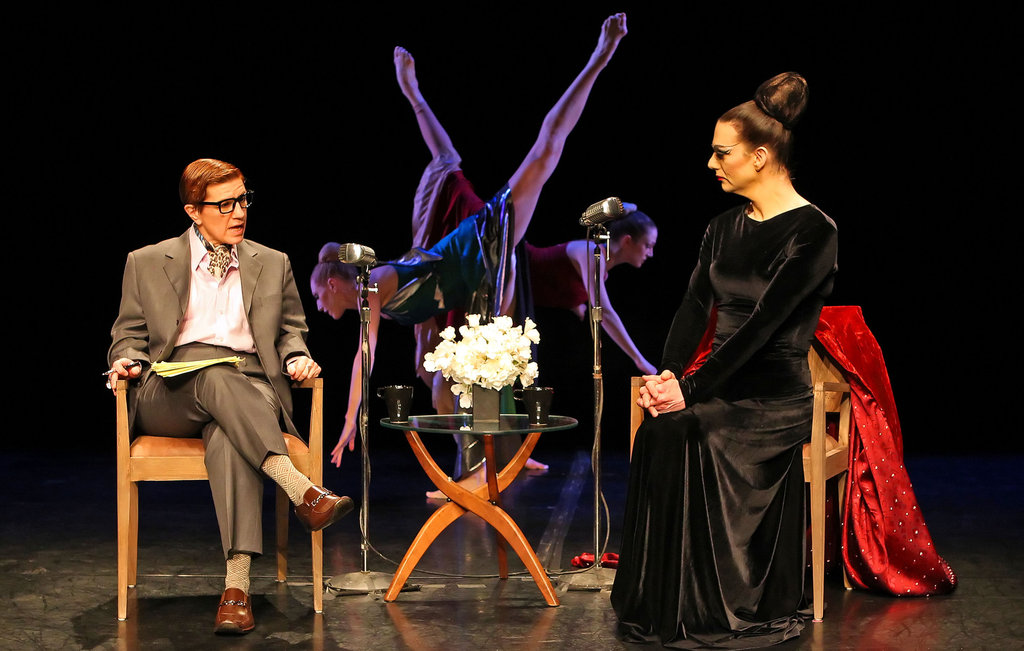“No Black man in chains in his own country, and watching the many deaths occurring around him every day, believes for a moment that America cares anything at all about the freedom of Asia. My own condition, as a Black man in America, tells me what Americans really feel and really want, and tells me who they really are. And, therefore, every bombed village is my hometown.” – James Baldwin
The Bandung and VietLaoKhmer reading groups have been gathering weekly to study the anti-colonial movements of Korea and Vietnam and their connection to African American experiences. Through this process, both groups have found a shared connection, a common denominator that is sadly rooted in oppression. This research resulted in an in-person dialogue amongst Asian American and African American activists which took place at the Asian Arts Initiative.
I went to this panel without any intention of writing an article. As a Filipinx whose history is deeply embedded in colonization, I was intrigued. Thus, I took my daughter, Malaya, who in her young thirteen-year-old self is realizing history in Amerikkka is often told through the white canon. Just a month ago, when studying online after contracting Covid-19, her social studies teacher said, “It was US imperative to fight and kill Filipinos for they were dangerous.” She responded by posting the White Man’s Burden poem in the chat, a poem that was used to justify the genocide of the Filipino people. The teacher responded, “What a beautiful piece of poetry.” With history taught to indoctrinate us with the viewpoint that Black and Brown people are intrinsically evil, “half devil, half child” (words from the White Man’s Burden), it is evident that history-telling is curated to disempower through a powerful weapon: education.
One of the conversations that struck me was from speaker Brando Do, a young millennial teacher and activist who stated, “The refugee identity remains a driving force behind the standard by which Vietnamese Americans lived their lives. In order to maintain their safety and social status, Vietnamese Americans are pressured to remain silent about the war crimes committed against the people of Vietnam. On the other hand, they are encouraged to use false claims to criticize the Socialist Republic of Vietnam and the forces that liberated Vietnam from imperialism. The majority of Vietnamese Americans consent with the position that the American war in Vietnam was necessary to free the Vietnamese people from communism.”
The justification of war, which has led peoples to be detached, uprooted, disarmed from the solace of a homeland, created the refugee crisis. Do’s message reminded me of Ibrahim Kendi’s research, Stamped From The Beginning, where Kendi mentions Zurara as the first chronicler who wrote about African people as savages, thus justifying enslavement and commodification of a people for the sake of Europe’s economic growth. Zurara’s words are still prevalent today. Do’s accounts of how people of Vietnam were stripped of their land, forced to migrate to foreign lands and create a new refugee identity, affirms my statement that Zurara’s sentiments still hold.
Pastor Tahoo Lee spoke about the image of the North Korea red monster which was taught to him as a kid as the “scary looking North Korean.” When he met someone from North Korea for the first time, he was aghast that they did not look like red monsters, but looked just like him. These images of red monster propaganda satisfy US agendas of portraying North Korea as bad, and South Korea with all its democratic US simulating frameworks as good. He mentions how the media in the US glorifies and deifies violence as seen in another powerful weapon: Hollywood.
As a young kid, I recall watching Apocalypse Now, a film that justified war against Vietnam and portrayed Vietnamese resistance fighters as villains and American soldiers as saviors. In the Philippines, I was taught to believe Ho Chi Minh was a rebel, erasing his fight for democracy in the narrative. Neither did I know of the atrocities of Agent Orange and how it continuously affects the land of Vietnam to this day. Sadly, the performance of war executed in Hollywood war films has had a global impact, a clout just as explosive as the bombs dropped on villages. These performances of terrorism and fear are just like every curated horror flick: propaganda that serves Amerikkka since the making of the film, Birth of a Nation.
Undoubtedly, there is a common struggle between Asians and Black Americans. More importantly to note, the struggle is not the same, but are interconnected. For instance, Black movements such as the Civil Right Movement inspired the Asian American movement. Muhammad Ali’s opposition of the draft to fight the Vietnam War mirrors how African American soldiers defected in the Philippine-US war. Corporal Fagen and other African American soldiers did not believe that they should conduct violence on people that are kin, especially when the people are protecting what’s theirs. Their defection was called unpatriotic; a similar sentiment was made towards Ali, who was stripped of his World Heavyweight Title, received a sentence and fine, and had his passport taken away which prevented him from boxing internationally.
Finding connectivity between Black and Asian Americans is a rhetoric that is rarely talked about in our current socio-political climate. Speaker Catherine Blunt, a retired principal of Parkway High School, explains that there is a lack of knowledge of the other groups’ experiences, and thus a lack of understanding about the interconnection between those experiences, resulting in hate towards the other. Blunt expressed how many cultural groups in Philadelphia stayed fragmented; “They did not want to do anything with another.” Thus, this event which highlighted these interconnected experiences was so important, and I wished more Philadelphians swarmed the Asian Arts Initiative space to undo the narratives that have been fed to us and to be in solidarity with each other.
After a full day of discourse, the event ended with performances. The Khmer Performing Arts and Culture showed a traditional blessing dance. Dancers carried golden goblets filled with flowers, caressing the space with hand movements, slowly shifting their weight to make different formations. They were so beautiful in their ease, antithetical to the vigor of western dance. Regal, grounded, controlled yet not muscled, the group hypnotized viewers with their meditative movement. Malaya was in utter admiration.
Another performance that caught my attention was the Korean Dance for Peace by Korean School of Southern New Jersey. A group of dancers in elaborate heavy dresses graced the space subtly walking in a line. Each dancer looked like royalty. The lead dancer had a silk sleeve, which she exquisitely flicked in various directions. I noticed the common execution and importance placed on breath in both of these dances. The emphasis on subtlety and stillness was ingrained into the choreography.
The last performance was an orchestra of Korean Drums. It was exhilarating, grandiose, high energy, soliciting empowerment from its audience. It was a perfect choice to conclude with a percussive celebration of good vibrations, taking me from a heavy mental place to a transcendent state of celebratory joy. Despite the atrocities of humankind, we find ourselves grounded in spirit through the portal of dance and music. Ase’
Korea, Vietnam, and Afro-America: Our Shared Struggle for Peace & Democracy, VietLaoKhmer and Bandung Reading Group group, Asian Arts Initiative, March 12.






